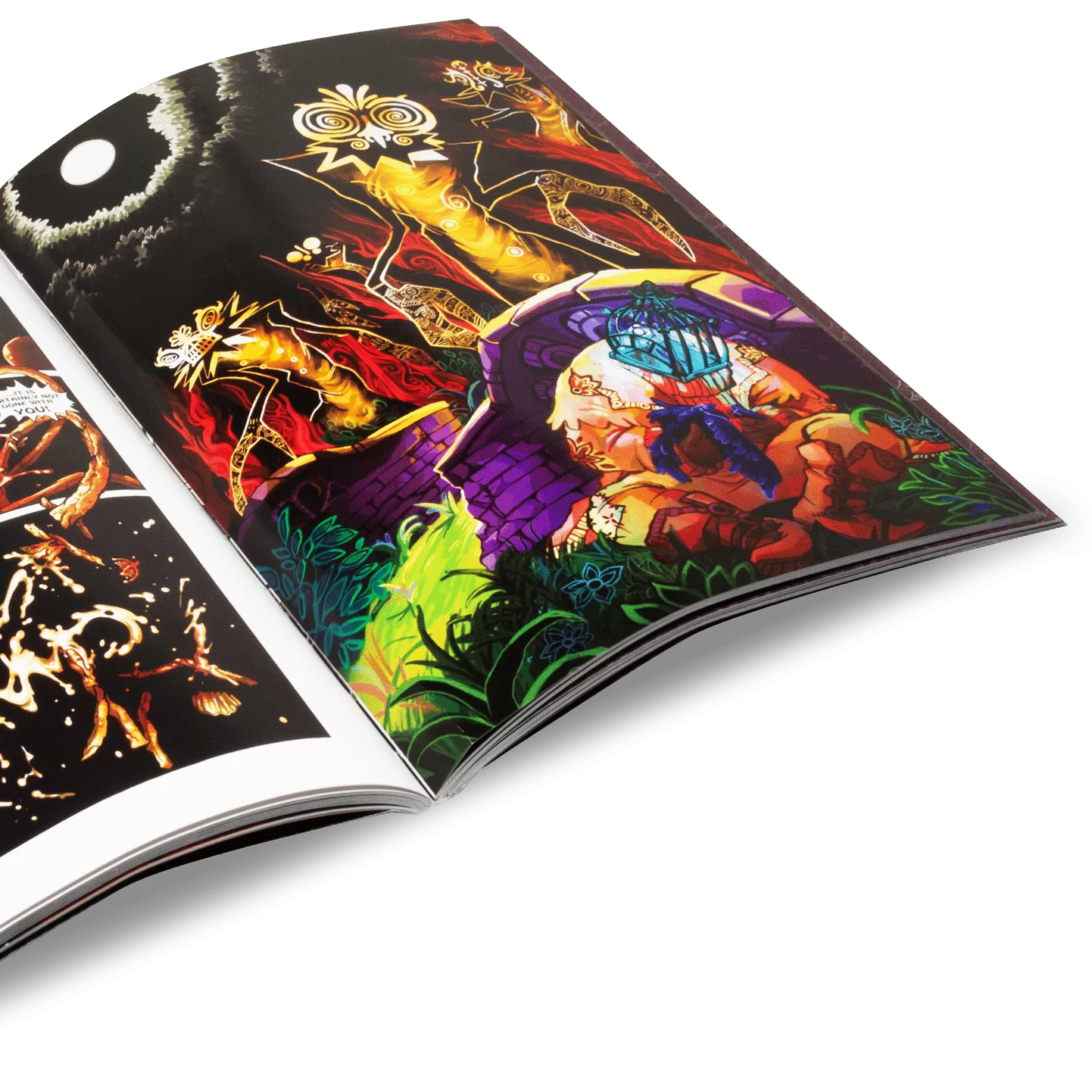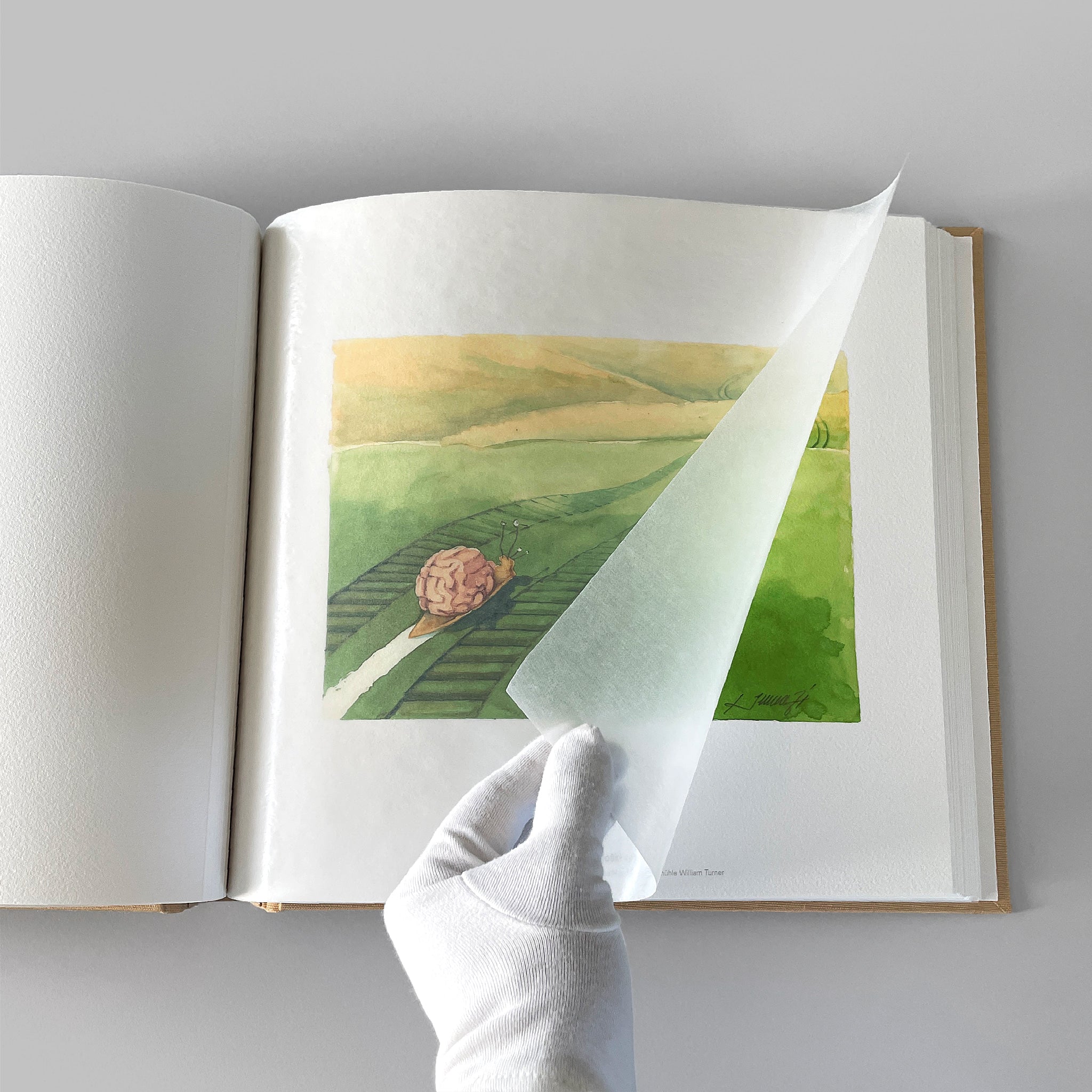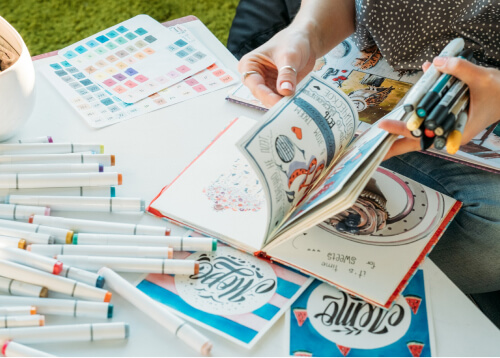Insider Methods to Improve Your art book Print Quality
Insider Methods to Improve Your art book Print Quality
Blog Article
Comprehending the Process Behind High-grade Art Book Printing for Art Enthusiasts
When it pertains to high-quality art book printing, understanding the intricacies of the process can raise your admiration for the last item. You could not understand how vital paper option and ink options are to the vibrancy of artwork. Each component plays a significant duty in achieving the preferred impact. As you explore the various components of art book printing, you'll uncover insights that can transform your viewpoint on art conservation and discussion.
The Importance of Paper Option in Art Book Printing
When it pertains to art book printing, the choice of paper can make or damage the final product. You desire your artwork to radiate, and the appropriate paper improves color vibrancy and information. Consider elements like weight, structure, and finish; these elements considerably influence how visitors regard your job.
For circumstances, a heavier stock conveys high quality and sturdiness, while a distinctive coating can add depth to photos. Smooth paper is excellent for in-depth reproductions, permitting great lines and subtle tones to appear crisp.
Do not forget the paper's brightness; a brighter sheet can help shades pop, making your art much more appealing. You'll likewise wish to think about exactly how the paper engages with inks and whether it can deal with the printing process without buckling or bleed-through. Inevitably, choosing the right paper sets the phase for your art, guaranteeing it captures the target market's attention simply as you visualized.
Choosing the Right Inks for Vibrant Reproductions
Choosing the right inks is equally as essential as selecting high quality paper to achieve dynamic reproductions in your art book. When you're publishing artwork, you want shades that stand out and properly stand for the initial item. Choose inks with a high pigment concentration; these often tend to create richer and extra saturated shades.
You could consider using historical inks, which resist fading gradually, ensuring your art book stays as striking as the day it was published. If you're functioning with pictures or digitally developed art, pigment-based inks can give a larger shade range, enhancing detail and deepness.
Do not forget the finish! Matte and glossy inks can dramatically alter the look of your artwork, so assume concerning the look you're intending to achieve - art book. Inevitably, the best ink choice complements your paper selection, developing a stunning aesthetic experience for your readers
The Duty of Color Management in Print Quality
Shade monitoring plays an essential role in accomplishing high print high quality for your art book. It ensures that the shades you see on your display equate accurately to the published page. Without efficient shade administration, your vivid artworks may appear plain or distorted, undermining your innovative vision.
Next off, make use of color accounts customized for your printer and paper kind. These profiles guide the printer in replicating shades accurately, lowering discrepancies between digital and published variations.
When you prepare your data, take into consideration using a shade space like Adobe RGB or CMYK, depending on your printer's specs. Always proof your job, too; a test print can expose any type of possible shade concerns prior to the last run. By focusing on color administration, you secure the integrity of your art, assuring your target market experiences it as you intended.

Understanding Various Binding Techniques
Attaining the ideal search for your art book surpasses color administration; binding methods additionally play a significant function in its general presentation and sturdiness. You have numerous alternatives to examine, each with its own special qualities.
If you're intending for a professional feel, situation binding provides a tough option with a hard cover, excellent for showcasing your art work. On the other hand, perfect binding provides an adaptable spinal column while maintaining expenses down, making it a popular choice for softcover publications.
Spiral binding allows your art book to lay flat, which is excellent for presenting images without obstruction. Meanwhile, saddle stitching is optimal for smaller pamphlets, offering a clean finish without the mass.
Ultimately, the binding technique you select must reflect your artistic vision and exactly how you want viewers to engage with your job. Ensure to weigh these alternatives thoroughly to achieve the most effective end result for your job.
The Impact of Print Size and Layout on Discussion
While the option of print dimension and design might appear secondary to content, they considerably affect just how your art work is regarded. The see this page measurements of your prints can either enhance or reduce the influence of your pieces. Bigger prints can attract viewers in, allowing them to appreciate intricate details, while smaller formats could call for even more intimate involvement.

Conservation Methods for Long-lasting Art Books
To guarantee your art books stand the examination of time, it's vital to implement efficient preservation methods. Usage acid-free storage boxes or safety sleeves to shield them from dust and YOURURL.com physical damages.
When handling your books, constantly wash your hands or use cotton handwear covers to avoid oils and dust moving onto the pages. Prevent flexing or creasing the spinal columns; rather, use book supports when presenting them.
For added security, take into consideration buying archival-quality products for any kind of repair work or improvements. Regularly inspect your collection for indications of wear or damages, dealing with concerns quickly. By adhering to these easy approaches, you can assure your art books stay vivid and available for many years ahead, maintaining their beauty and value for future generations.
Teaming up With Printers for Optimum Results
When you prepare to publish your art book, choosing the appropriate printer is vital to accomplishing your vision. Clear interaction about your expectations and requirements will help guarantee that both you and the printer are on the same page. Let's explore how to make this collaboration as smooth and effective as feasible.
Picking the Right Printer

Reliable Communication Methods
Reliable communication is crucial for turning your art book vision into truth, specifically when collaborating with printers. art book. Begin by plainly detailing your project's goals, including style components, preferred materials, and any type of certain printing strategies. Do not hesitate to share your motivations and recommendations; this aids the printer recognize your visual
Establish regular check-ins to talk about development and attend to any kind of questions. Use visuals, like mock-ups or samples, to convey your ideas better. Be open to responses, as printers usually have beneficial understandings that can enhance your task. Keep a favorable partnership by being considerate and pleased of their know-how. This cooperation will certainly guarantee that your art book meets your expectations and beams in its last kind.
Often Asked Questions
What Prevail Blunders to Stay Clear Of in Art Book Printing?
When printing your art book, avoid usual errors like bad resolution images, incorrect shade additional hints accounts, and overlooking page format. Do not fail to remember to proofread and double-check information to verify your end product meets your assumptions.
Exactly How Does Digital Printing Differ From Traditional Printing Approaches?
Digital printing utilizes digital documents to produce prints directly, permitting for quicker turn-around and customization. On the other hand, standard techniques include physical plates, which can be time-consuming and much less adaptable for little runs or unique layouts.
What Is the Common Turn-around Time for Art Book Printing?
The normal turnaround time for art book printing differs, but you can anticipate it to take anywhere from a few weeks to a number of months. Factors like intricacy, quantity, and printing technique all influence this timeline.
Can I Print a Minimal Edition Art Book Financially?
You can print a restricted version art book economically by picking affordable products, optimizing print runs, and using electronic printing options. Mindful planning and budgeting will aid you achieve high quality without overspending.
What Are the Ecological Considerations in Art Book Printing?
When taking into consideration art book printing, you ought to think of environment-friendly products, sustainable inks, and energy-efficient processes (art book). Picking neighborhood printers can also minimize your carbon impact, making your project both lovely and eco responsible
Report this page